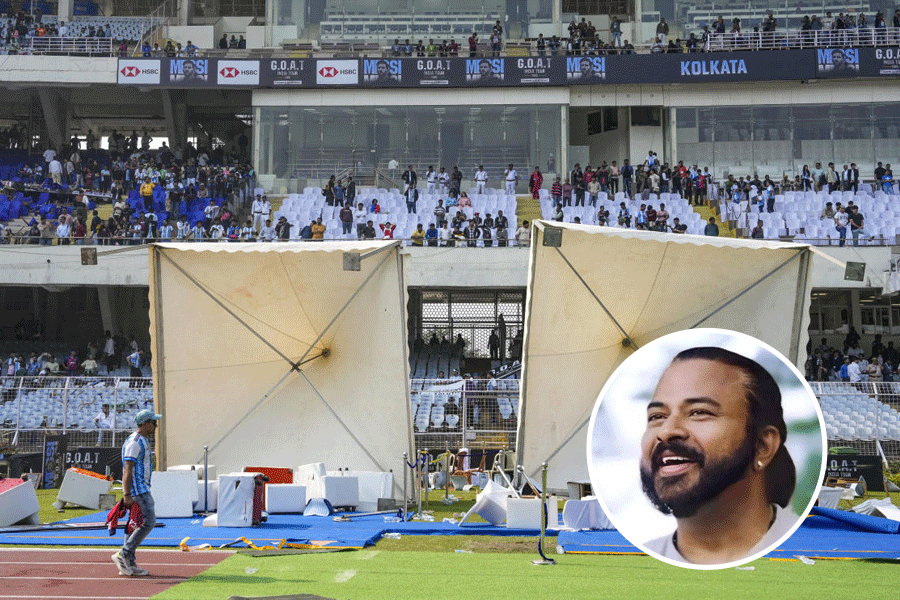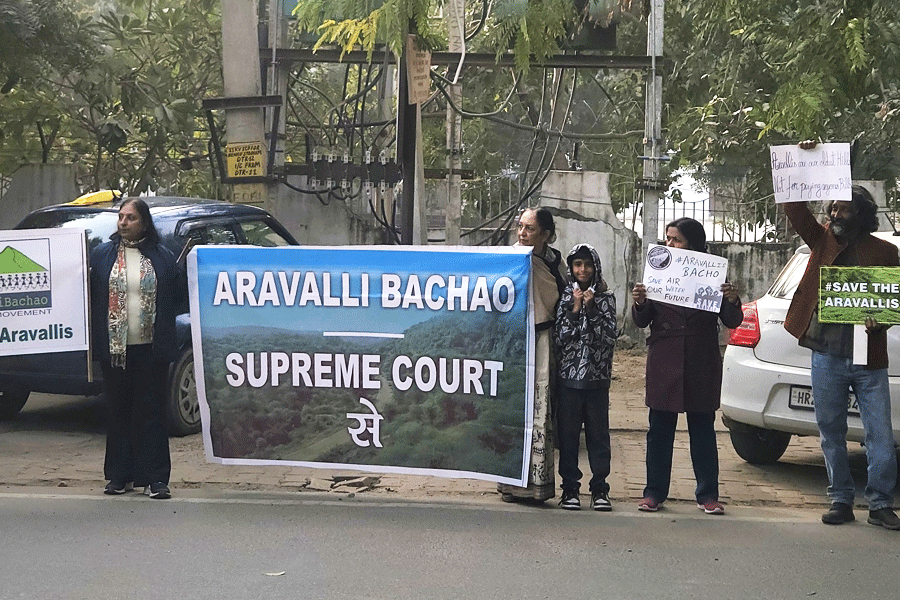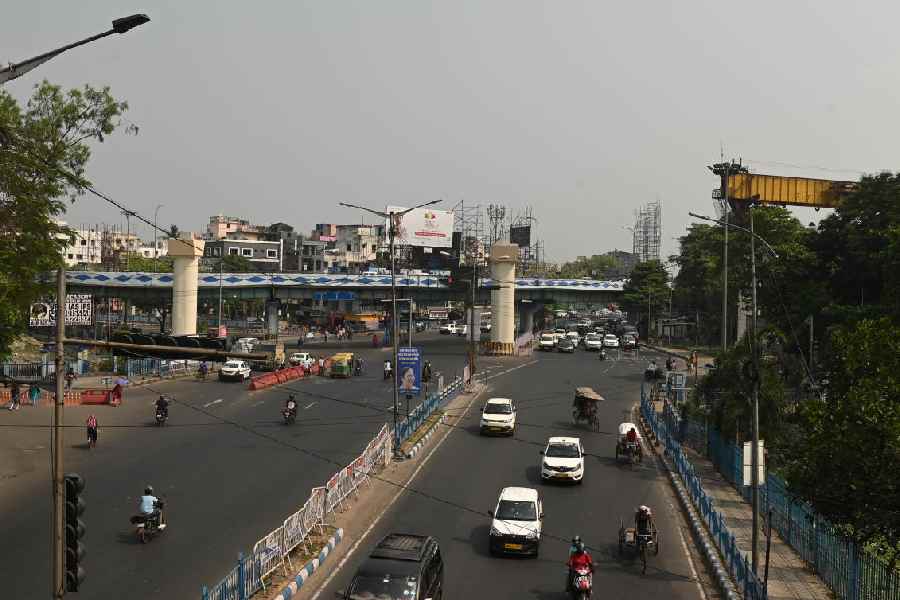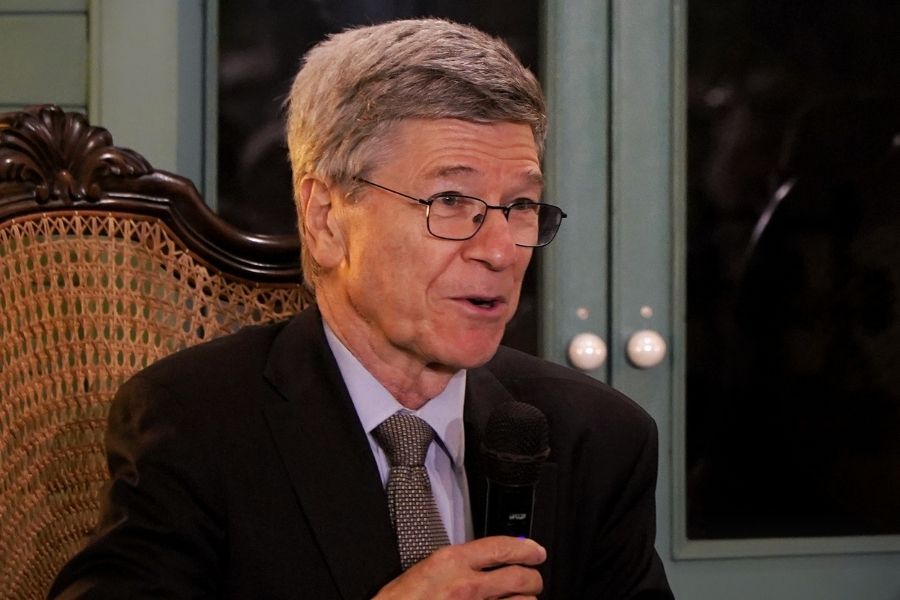 |
The expectation that the Aam Aadmi Party’s resignation as Delhi’s ruling party would diminish its ability to make the headlines has been belied. Arvind Kejriwal’s tour of Narendra Modi’s stronghold, Gujarat, and the subsequent fracas in Delhi, proved all over again that the AAP’s genius for capturing the news cycle remained intact.
What makes the AAP the object of such obsessive attention? Most polls give the party a maximum of ten seats in the imminent general elections. How has an outfit with such slender prospects managed to frame the coming election as a contest between itself and a resurgent Modi-led Bharatiya Janata Party?
One answer might be the AAP’s success in defining ordinariness. It has done this by laying claim to the idiom of that unloved urban stratum, the lower middle class. First Marx and then the anxieties of a post-colonial middle class made sure that the organized Left in India and its anglophone leadership shunned any identification with the urban petite bourgeoisie.
The muffler-wearing, tiffin-carrier carrying lower-middle class was never used as a style model by any populist party till the AAP came along. One reason why a substantial section of metropolitan India’s elite loathes the AAP is aesthetic: not only is the AAP the very opposite of cool, its cloth topis printed with the party’s name prefigure the babu/chaprasi hell that awaits failed members of India’s shabby-genteel middle class.
But Kejriwal and R.K. Laxman had the same intuition: in urban India, the ordinary man is best defined by the style of the lower salariat. It isn’t an accident that AAP leaders speak Hindi as often as they can, even those who are perfectly fluent in English. Ordinariness is best done in the vernacular. If the Delhi election is any guide, the AAP’s decision to make itself in the image of urban Everyman commuting to work via public transport, resonated deeply with the capital’s electorate.
The other — and much more important — reason for the AAP’s extraordinary public profile is its spectacular success in staking out the moral high ground. As many pundits have noted, one of the principal poses AAP spokespersons strike is that of self-righteous virtue. Self-righteousness ought to be off-putting, but in the service of an anti-corruption narrative instead of provoking cynicism or exasperation, it seems to elicit a durable suspension of disbelief. One of the great lessons the AAP has taught us is that the Indian electorate isn’t reflexively cynical. Indian voters have an inexhaustible appetite for political virtue, so long as the self-righteous neta has a virtuous resumé.
The highlight of this election season has been the contrast between the switched-on extempore skills of Kejriwal, his made-for-television nimbleness, and Modi’s great, rehearsed set-pieces: his enormous public rallies and the declamatory, rhetorically abrasive speech-making that he has mastered. Kejriwal’s campaign is premised on the gamble that voters will empathize with that embodiment of ordinariness, the politician as vigilant citizen.
Modi’s whole strategy is to loom larger than life, rather like the colossal Sardar Patel statue he favours or that chhappan inch chhaati (fifty-six inch chest) that he cites to underline his political virility. Modi shuns the television studio unless he can control the environment completely: he recently pulled out of a Facebook-sponsored town-hall style interview with Madhu Trehan on NDTV. But his rallies are great, crowd-pulling advertisements for himself. Public oratory isn’t Kejriwal’s forte. His political genius lies in creating political events that dramatize the AAP’s virtue and its rivals’ villainy: it needs the amplification of television.
The AAP’s great good fortune is that it has no past and consequently no baggage. Kejriwal knows that he can’t fight great attritional battles based on manpower and resources: the AAP, despite its mushrooming growth, is outmatched in these areas. Kejriwal & Co have chosen to be electoral guerillas constantly looking to pull off political ambushes. Through these publicity coups they look to galvanize voters into believing that they, as ordinary citizens, are the natural constituents of the Aam Aadmi Party.
Given the size of India and the inevitable remoteness of elected representatives from their constituents, the AAP’s insistence that the voter is king, someone who needs to be constantly consulted, is something of a sleight of hand. No large democracy can be plebiscitary, and specially not India, given that elections to its lower house produce just 543 representatives for nearly a billion and a half people.
Nonetheless, the AAP’s insistence that the average Indian can repossess politics, can wrest it back from corrupt professional netas, that the Indian people can remake themselves into virtuous, limber and successful agents of political change, has proved to have astonishing drawing power. The AAP’s political positioning and rhetoric wouldn’t have mattered if it hadn’t won the Delhi election on a shoestring. But it did and now, till the general elections prove us wrong, there is that dizzying sense, even amongst its critics, that anything is possible, that despite its Lilliputian presence on the national stage, lightning just might strike twice in the same place.
The AAP’s success in achieving political office and its willingness to resign it, helped create an audience for its special brand of insolent virtue. The AAP leadership’s knack of saying the unsayable — its willingness to denounce Mukesh Ambani and Reliance on prime time television, for example, and its willingness to name names when it alleged political corruption — reinforced its reputation for speaking truth to power. Instead of consigning the AAP to the political limbo that awaits parties which make conspiracy their stock-in-trade, Kejriwal’s and Yadav’s allegations consolidated the AAP’s image as a David taking on corrupt Goliaths. The reason the party was given the benefit of doubt was a) that it had won an election without quantities of black money, b) it seemed hyperactively committed to its anti-corruption mantra, and c) it resigned office on a matter of political principle instead of settling down to milk the State. Renunciation is a powerful gesture in desi politics. When the organized Left denounced capitalism, it never got a fraction of the credit for political courage that the AAP got for taking on Ambani. The Left’s ideological predispositions made its critiques seem generic whereas the AAP’s willingness to name names makes it seem insurgent.
Virtue needs a foil and here the AAP is fortunate because there is something of the night about the BJP. This darkness isn’t peculiar to the BJP; all right-wing parties try to consolidate majoritarian grievance and prejudice and dress it up in respectable political clothing. The right-wing party’s knack for putting malcontented minorities in their place is part of their appeal. Majoritarian politics is based on a sense of injury and resentment. Modi’s inability to try to lay Godhra’s ghost by uttering some anodyne word of regret, isn’t just down to ego; it is ideologically impossible. Central to the appeal of right-wing majoritarian parties is the ability to say and do unspeakable things in the name of the majority that it seeks to mobilize. Once said and done they can’t be explicitly disowned because the ‘daring’ of that unspeakable deed or the unsayable thing is what draws the majoritarian party’s constituency to it.
In Japan, the right-wing LDP’s visits to the Yasukuni Shrine that honours Japan’s war dead — amongst them people designated war criminals after World War II — routinely provoke outrage in China and Korea, countries that suffered Japanese militarism both before and during the World War II. Prime Minister Abe visited in December; he couldn’t help himself. State Shinto, Japanese militarism and the perceived unfairness of post-war victor’s justice is so central to the LDP’s nationalism and its ideological appeal to the conservative Japanese, that a forswearing of the the Yasukuni shrine is politically impossible.
In the same way, no member of the sangh parivar can disown what he ideologically believes was the retributory justice and rightness of the Godhra killings or the razing of the Babri Masjid. Nor will he explicitly repudiate Golwalkar’s assertion that Hitler’s way with Germany’s minorities ought to be a model for Indians. Golwalkar’s views, the violence of the Ram Janmabhoomi movement and the Gujarat pogrom might be foregrounded or obscured depending on the BJP’s assessment of what is politically respectable or plausible at a particular moment, but they remain reliable dogwhistles, dark emblems of majoritarian daring.
The appeal of the AAP is the opposite of this: there are no dogwhistles, no radioactive totems from the past: what you see is what you get. The oafishness of Somnath Bharti, the inspired insolence of Kejriwal, the mincing cleverness of Yogendra Yadav, the wild-eyed gabble of Ashutosh, the smiling self-righteousness of Shazia Ilmi might infuriate or annoy, but their agenda is contained within the bounds of political reason: the abolition of corruption, the nurturing of neighbourhood politics, the calling out of crony capitalism and so on.
Formally, the BJP has framed its electoral campaign around the themes of sound governance and economic growth. But those who choose to take it at its word must either ignore its violent past or ‘normalize’ it by citing, in extenuation, the Congress’s violent past. In contrast, the people who choose to vote for the AAP, won’t have to step over dead bodies or skirt the rubble of sacred places or affect deafness when dog-whistles blow. It is this promise of a non-feral politics that has allowed a political runt to cast, for now, such a long shadow.










